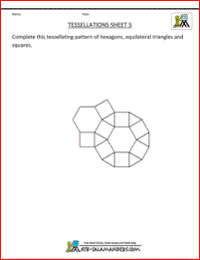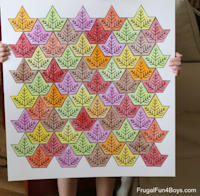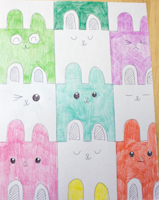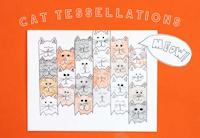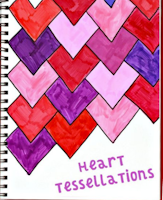M.C. Escher
M.C. Escher -- School-Age
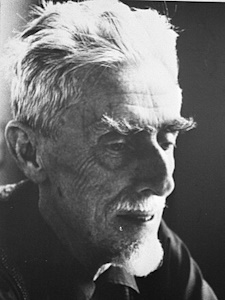
M.C. Escher (1898-1972) was Danish. He is one of the world’s most famous graphic artists. Much of the art he created was mathematically-inspired art.
M.C. Escher combined art and math. One technique M.C. Escher used was fitting together multiple shapes without any gaps or overlapping -- tessellation.

Hexagonal tessellation with animals; Escher reused the design in his lithograph Reptiles.
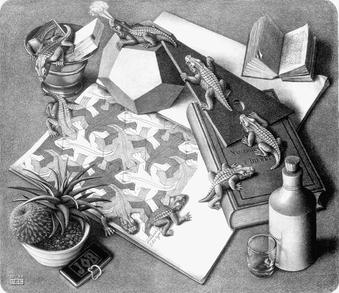
M.C. Escher's Reptiles
The Mathematical Art Of M.C. Esche Video
Tessellation
Tessellation: It is basically a way to tile a floor. Tessellation is a surface with shapes that are all the same (regular polygons) that fit together in a pattern with no gaps or overlaps. Tessellation that uses two shapes is called an irregular tessellation.

